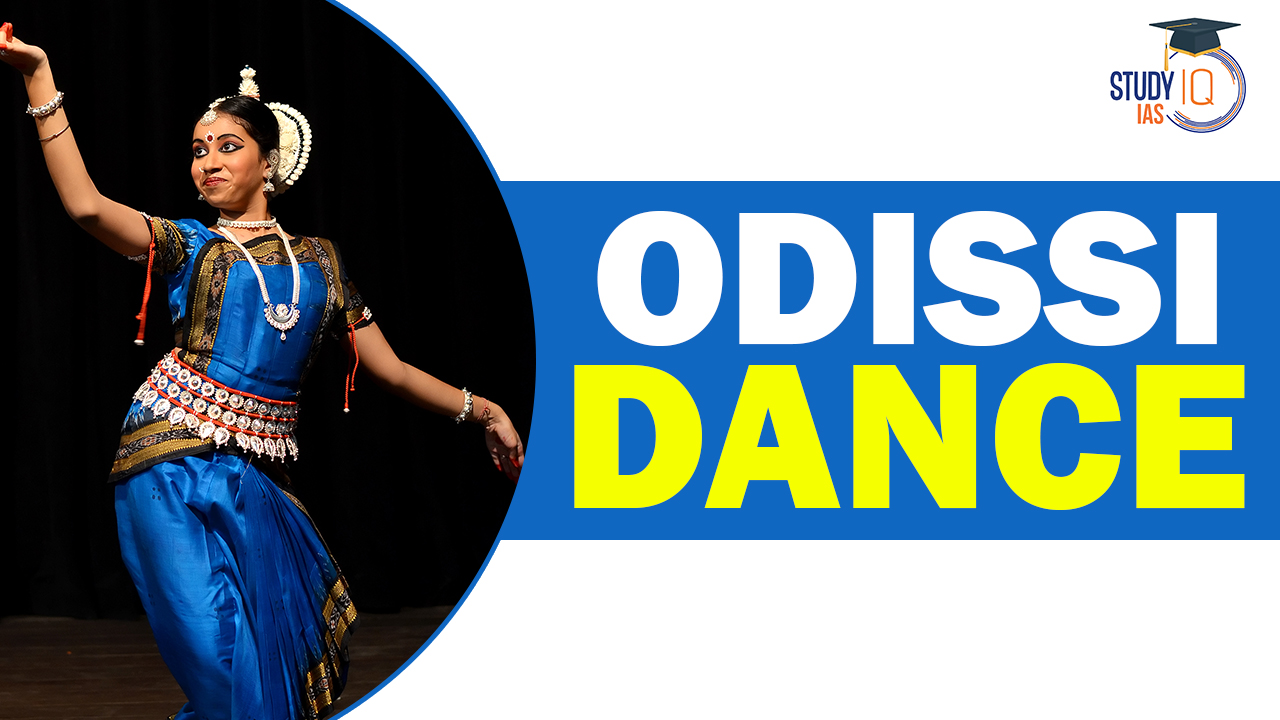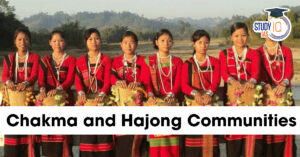Table of Contents
Odissi, a classical dance originating in Odisha, India, finds its roots in the ancient Sanskrit Hindu text ‘Natya Shastra.’ Evolving from the sacred environs of Odisha’s Hindu temples, this dance form is a visual narrative of mythical tales and religious stories. Dancers convey devotional poems and spiritual concepts through precise body movements, expressions, and gestures. Odissi’s repertoire encompasses invocation, nrita, nritya, natya, and moksha, with themes often inspired by Vaishnavism and Hindu deities such as Shiva, Surya, and Shakti, depicted in ancient temple sculptures.
We’re now on WhatsApp. Click to Join
Odissi Dance: Indian Classical Dance
Odissi is a classical Indian dance form that originated in the state of Odisha. It is a sensuous and lyrical dance form that is considered a dance of love.
Odissi is a dance-drama genre of performance art. Artists and musicians play out a story, a spiritual message, or a devotional poem from the Hindu texts. They use symbolic costumes, body movements, abhinaya (expressions), and mudras (gestures and sign language) set out in ancient Sanskrit literature.
Odissi is usually performed in Orissa classical music, which is a traditional style of Indian classical music that originated in the state of Odisha.
Odissi is believed to be one of the oldest surviving classical dance forms in the country, originating its roots dating back to the temples of Odisha in the 2nd century BCE. As with all other classical dance forms of India, Odissi was also performed as a part of temple worship.
Odissi is considered to be one of the most complex forms of classical dance. It keeps different body parts in sync and strengthens the lower half of your body, especially the muscles of your thighs and calves.
Odissi Dance Origin and Evolution
- Roots in Natya Shastra: Odissi’s foundation can be traced to the ancient Sanskrit Hindu text, ‘Natya Shastra,’ reflecting all 108 fundamental dance units outlined in the text.
- Dance Categories: ‘Natya Shastra’ divides dance into ‘nrita’ (pure dance) and ‘nritya’ (expressive solo dance), emphasizing hand movements, gestures, and expressions.
- Archaeological Evidence: Archaeological sites in Odisha, such as Puri, Konark, and Bhubaneswar, feature historical carvings in temples and caves showcasing dance postures and musical forms.
- Udayagiri Heritage: The Udayagiri heritage site, linked to the reign of Kharavela, exhibits cave carvings depicting musicians and dance, reflecting the dance’s ancient roots.
- 6th-9th Century Art: Odissi dance carvings from the 6th to 9th centuries CE are found in Hindu, Buddhist, and Jaina archaeological sites, indicating its prevalence in diverse cultural contexts.
- Medieval Era Maharis: Maharis, temple dancers, and nata-mandaps (dance halls) gained popularity by the 9th century CE, reflecting the widespread acceptance of Odissi in medieval times.
- Textual References: Jain text ‘Kalpa Sūtra’ and Hindu dance texts like ‘Abhinaya Darpana’ highlight Odissi dance poses, indicating its recognition in diverse regions.
- Sculptural Evidence: Sculptures from temples like Jagannath, Brahmeswara, and Sun Temple at Konark depict Odissi dance postures, showcasing its prevalence in temple traditions.
- Mughal Era Challenges: Muslim invasions, notably by Sultan Firuz Shah Tughlaq, led to the destruction of temples and dance halls, impacting the development of Odissi.
- Gotipuas Tradition: In the 17th century, under King Ramachandradeva’s patronage, Odissi expanded to include boys and youths (Gotipuas), blending dance with athletics and martial arts.
- Decline during British Rule: British colonial rule in the 18th and 19th centuries, coupled with missionary disdain and economic pressures, led to the decline of Odissi and other classical dance forms.
- Revival Efforts: In the early 20th century, as India sought independence, a revivalist movement emerged to revive classical arts, including Odissi. Kavichandra Kalicharan Pattanayak played a crucial role in the revival, coining the term ‘Odissi.’
Odissi Dance Repertoire
- Invocation (Mangalacharana): Begins with Pushpanjali (flower offering) and Bhumi Pranam (salutation to Mother Earth).
- Nritta (Batu or Battu Nrutya): Pure dance dedicated to Lord Shiva, performed on rhythmic music without recitation.
- Nritya: Expressional dance (Abhinaya) conveying stories, songs, or poetry through hand gestures (mudras), emotions (bhavas), and eye movements.
- Natya: Includes dance dramas based on Hindu mythological texts and epics.
- Moksha: Concludes the performance, aiming to express the feeling of soul emancipation.
Odissi Dance Costumes
- Female Dancers: Wear vibrant silk sarees like Bomkai or Sambalpuri, adorned with traditional designs. Silver jewelry, ghunghru anklets, and alta on feet and palms. Elaborate hair with a Mukoot or flower crest.
- Male Dancers: Don a pleated dhoti covering the lower body, leaving the upper body bare. A waist belt completes the attire.
Odissi Dance Instruments & Music
- Unique incorporation of Indian ragas, showcasing the exchange of musical concepts between North and South India.
- Main ragas: Shokabaradi, Karnata, Bhairavee, Dhanashri, Panchama, Shree Gowda, Nata, Baradi, Kalyana.
- Musical instruments: Tabla, pakhawaj, harmonium, cymbals, violin, flute, sitar, and Swarmandal.
Odissi Dance Famous Exponents
- Revival Pioneers (1940s): Kelucharan Mohapatra, Raghunath Dutta, Deba Prasad Das, Pankaj Charan Das, Gangadhar Pradhan.
- Classical Status Achiever: Guru Mayadhar Raut played a pivotal role in obtaining classical status.
- Disciples of Kelucharan Mohapatra: Sanjukta Panigrahi, Sonal Mansingh, Kumkum Mohanty.
- Other Notable Exponents: Aruna Mohanty, Anita Babu, Aadya Kaktikar, contributed significantly to Odissi’s legacy.
Odissi Dance UPSC
Odissi, a classical dance from Odisha, India, traces its roots to the ancient ‘Natya Shastra.’ Evolving from temple rituals, it narrates mythical tales and spiritual stories. The dance, dating back to the 2nd century BCE, witnessed a revival in the 20th century. Its intricate repertoire includes invocation, pure dance, expressive storytelling, dance dramas, and a soul-liberating conclusion. Costumes feature vibrant silk sarees, jewellery, and traditional attire. Odissi uniquely incorporates Indian ragas in its music, symbolizing cultural exchange. Pioneers like Kelucharan Mohapatra and his disciples significantly shaped Odissi’s classical status, showcasing its enduring legacy worldwide.
| Other Classical Dances of India | |
| Bharatanatyam Dance | Kathak Dance |
| Kuchipudi Dance | Manipuri Dance |
| Kathakali Dance | Mohiniyattam Dance |
| Sattriya Dance | Odissi Dance |


 Chakma and Hajong Communities: History, ...
Chakma and Hajong Communities: History, ...
 Sheesh Mahal in Delhi Restoration, Archi...
Sheesh Mahal in Delhi Restoration, Archi...
 Bonalu Festival 2025: Date, History, Rit...
Bonalu Festival 2025: Date, History, Rit...





















